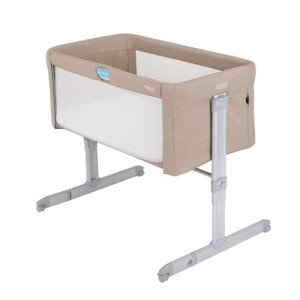Understanding Cot Infants: A Comprehensive Guide for New Parents
Inviting a newborn into the world is one of life's most joyous experiences; however, it is also loaded with duties, especially concerning security and care. The cot, or crib, is a crucial component in guaranteeing a safe sleeping environment for babies. This post aims to inform moms and dads about the important aspects of cot infants, clarifying safety, kinds of cots, recommended practices, and much more.
What is a Cot Infant?
A "cot infant" describes an infant that sleeps in a cot, which is a small bed specifically developed to offer a safe sleeping area for infants, typically ages 0 to 2 years. The main function of a cot is to keep infants safe while they sleep, minimizing the risk of falls and ensuring they are safe in a consisted of environment.
Kinds of Cots
When picking the best cot for an infant, parents have numerous choices to pick from. Below is an extensive table detailing different types of cots offered in the market:
| Type of Cot | Description | Benefits | Downsides |
|---|---|---|---|
| Standard Cot | A normal cot made from wood or metal, designed for babies up to 24 months. | Safe, resilient, adjustable mattress height. | Large, may take up considerable space. |
| Travel Cot | A portable, lightweight cot that can be quickly folded. | Easy to transport, ideal for traveling. | Less tough than basic cots. |
| Co-Sleeper | A cot that connects to the parents' bed. | Promotes bonding, permits easy access for nursing. | Minimal sleeping space, may not be as protected. |
| Convertible Crib | A cot that can be changed into a toddler bed. | Long-term use, versatile as your child grows. | Higher preliminary expense, more complex assembly. |
| Moses Basket | A small, portable basket for newborns, generally utilized in the early months. | Lightweight, comfortable environment for babies. | Short life expectancy, less safe as children grow. |
Security Guidelines for Cot Infants
Ensuring the safety of a cot infant is critical. The American Academy of Pediatrics (AAP) supplies several guidelines that parents need to follow when utilizing cots:
- Placement: Place the cot away from windows, curtains, cords, and lights to avoid any prospective risks.
- Bed mattress Fit: Ensure the bed mattress fits comfortably into the cot frame without any spaces, eliminating the danger of entrapment.
- Bed linen: Use a company mattress with a fitted sheet. Prevent toys, bumper pads, heavy blankets, and pillows to reduce suffocation threats.
- Sleeping Position: Always place the infant on their back to sleep. This position has been linked to a significant reduction in Sudden Infant Death Syndrome (SIDS).
- Regular Checks: Inspect the cot routinely for loose or damaged parts, and tighten up or change them as required.
Additional Considerations
In addition to the safety standards, there are other elements to consider when caring for cot babies:
- Monitoring Temperature: Infants can easily become too hot or too cold. Dressing them in proper layers and ensuring the cot is in a comfy environment is important.
- Regular: Establishing a constant bedtime regimen can assist infants feel secure and promote better sleep practices.
- Transitioning: As infants grow, parents need to be prepared for the shift from cot to toddler bed. Best Cot Beds of preparedness consist of climbing out of the cot or going beyond the weight limit.
Frequently asked questions
For how long can a baby stay in a cot?
Usually, babies can use a cot till they reach 24 months or when they can climb up out separately. Always inspect the producer's suggestions for particular weight limitations and security guidelines.
Is a co-sleeper safe?
Co-sleepers can be safe when properly used, provided that they connect safely to the moms and dads' bed. Constantly follow safety suggestions to avoid any risks associated with sleeping plans.
What type of bedding should be used in a cot?
A firm mattress with a fitted sheet is advised. Avoid any additional bed linen, consisting of pillows, blankets, or stuffed animals, to make sure the infant's security.
How can I guarantee my infant sleeps comfortably?
Display the infant's room temperature level, dress them properly for sleep, and preserve a relaxing bedtime routine to promote comfort and a restful sleep.
When should I shift my kid to a toddler bed?
Most parents transition their child to a toddler bed between the ages of 2 and 3 years, however readiness can vary. Try to find indications such as climbing out of the cot or requiring more area.
Looking after a cot infant involves understanding the specific needs of babies in their early years. By choosing the appropriate cot, following safety guidelines, and keeping a comfy sleeping environment, parents can ensure a safe and nurturing space for their little ones. As every child is distinct, it is important to remain informed and prepared, adjusting to the individual requirements of the cot infant as they grow. With the best knowledge and practices, moms and dads can develop a safe haven for their newborns, making sure peace of mind for both parents and babies alike.

